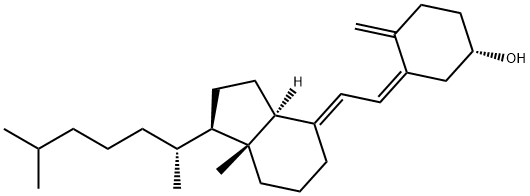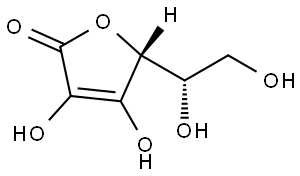A8349812
Vitamin B<sub>12</sub> , Analysis standard , 68-19-9
Synonym(s):
Cyanocobalamin;Vitamin B12;CC;Cyanocobalmin;Cyanocob(III)alamin
CAS NO.:68-19-9
Empirical Formula: C63H88CoN14O14P
Molecular Weight: 1355.37
MDL number: MFCD00151092
EINECS: 200-680-0
| Pack Size | Price | Stock | Quantity |
| 100MG | RMB239.20 | In Stock |
|
| others | Enquire |
Update time: 2022-07-08
PRODUCT Properties
| Melting point: | >300°C |
| Boiling point: | >300 °C |
| alpha | 23656 -59 ± 9° (dil aq soln) |
| bulk density | 450-600kg/m3 |
| Flash point: | 9℃ |
| storage temp. | 2-8°C |
| solubility | Sparingly soluble in water and in ethanol (96 per cent), practically insoluble in acetone. The anhydrous substance is very hygroscopic. |
| form | Crystalline Powder or Crystals |
| pka | pKa 3.28±0.04(H2O,D2O t=23±0.5 Iunspeci?ed) (Uncertain) |
| color | Red to dark red |
| PH | 6.0 (20°C, 1g/L in H2O) |
| Odor | dark red cryst. or powd., odorless and tasteless |
| biological source | synthetic ((organic)) |
| Water Solubility | Soluble |
| Sensitive | Hygroscopic |
| Merck | 14,10014 |
| BRN | 4122889 |
| Exposure limits | NIOSH: IDLH 25 mg/m3 |
| Stability: | Hygroscopic. Keep cold and dry. |
| InChIKey | RMRCNWBMXRMIRW-WZHZPDAFSA-L |
| LogP | 3.570 (est) |
| EPA Substance Registry System | Vitamin B12 (68-19-9) |
Description and Uses
Prototype of the family of naturally occurring cobalt coordination compounds knows as corrinoids. Analogs of vitamin B12 which differ only in the β-ligand of the cobalt are termed cobalamins. Synthesi zed almost exclusively by bacteria. Dietary sources include fish, meat, liver, and dairy products; plants have little or no cobalamins. Converted by the body into its bioactive forms, methylcobalamin and cobamamide, which serve as enzyme cofactors. Severe deficiency may result in megaloblastic anemia and/or neurological impairment.
Safety
| Symbol(GHS) |    GHS02,GHS06,GHS08 |
| Signal word | Danger |
| Hazard statements | H225-H301+H311+H331-H370 |
| Precautionary statements | P210-P260-P280-P301+P310-P311 |
| Hazard Codes | |
| HS Code | 2936260000 |
| Hazardous Substances Data | 68-19-9(Hazardous Substances Data) |
| Toxicity | LD50 intravenous in mouse: 2gm/kg |




